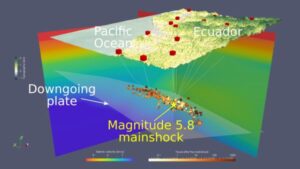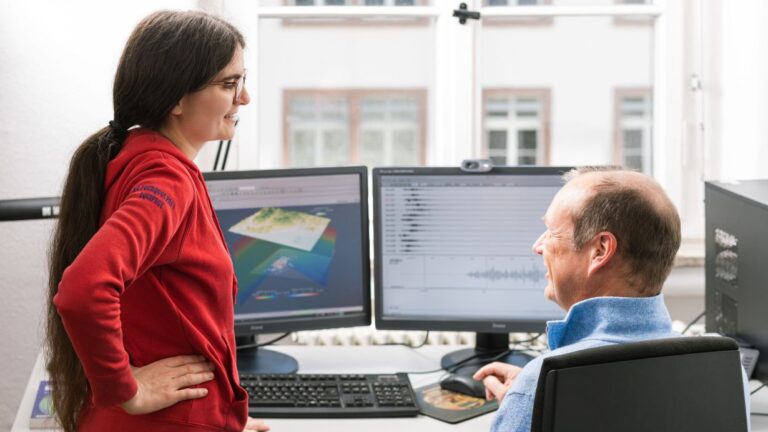According to Karlsruhe Institute of Technology (KIT) Researchers’ latest earthquake risk research, the concept of a strong single earthquake at subduction interfaces might be “obsolete”.
The scientists looked at the earthquake model which sees one tectonic plate slide underneath another tectonic plate, where strong earthquakes result frequently. For example, the severe earthquake off the coast of Taiwan in early April 2024 also took place at such a subduction interface.
Published in Nature, the study has suggested that earthquakes of this type may be a series of ruptures in a multi-fault network rather than a single rupture. The corresponding evidence was found by the team using a very dense network of seismometers in a comparable subduction zone in Ecuador. Using artificial intelligence (AI), the researchers generated a three-dimensional model of seismic activity.
They also highlighted that wherever tectonic plates collide with each other, stress results – particularly along subduction zones, where one tectonic plate slides underneath another one. When they detach, extremely strong earthquakes may result. A hotspot of such incidents is the Pacific Ring of Fire, which extends from the West Coast of the American continent to Japan to the Philippines. About 90% of all earthquakes worldwide happen here, and threaten megacities like Tokyo and Jakarta.
To better estimate the effects of such earthquakes on humans and the environment, researchers of KIT and their partners from the Helmholtz Centre Potsdam – German Research Centre for Geosciences (GFZ), Escuela Politécnica Nacional (EPN) in Quito, and the Laboratoire Géoazur in Valbonne studied seismic activity in a subduction zone in Ecuador and obtained surprising findings.
“We found evidence that the concept of stress being relieved by a single major earthquake along a single fracture surface may be obsolete,” said Professor Andreas Rietbrock from KIT’s Geophysical Institute (GPI). “Instead, we should rather speak of a multi-fault network, in which several ruptures give rise to a single earthquake.”
There is no one megafault
While previous studies covered large spaces and time ranges, the researchers now used AI methods, an increased measurement density and a three-dimensional velocity model to derive a detailed picture of seismicity. The team studied more than 1,500 seismic events in Ecuador between March 12, 2022, and May 26, 2022.
“We found that seismicity occurred in a primary region near the main earthquake and in a secondary region near the aftershocks,” commented Dr Caroline Chalumeau from GPI, the first author of the study. “Seismicity in the primary region occurred on several different fault planes that were often located on top of each other. At some points, parallel seismically active planes were found. At other points, single seismically active planes were encountered.” Parallelism of the earthquakes was not related to a specific depth.
Analysis of the earthquakes in Ecuador also yielded new findings about aftershocks. “We found that aftershocks first occur near the epicenter of the main shock. Then, they gradually spread into other directions,” Chalumeau said, stating that the spreading of aftershocks in the region is controlled mainly by subsequent sliding of the plates.

in the form of spheres. The size reflects the intensity, the color and the time of the earthquake.
Credit – Caroline Chalumeau and KIT
Better understanding earthquake risks
“We have to radically change our understanding of severe earthquakes,” Rietbrock summarized. Analysis of seismic activity in Ecuador provided evidence of a network of partly superposed and parallel faults rather than a single main fault in subduction zones. “This finding will influence future modeling of earthquakes and of aseismic slides, i.e. plate movements without earthquakes,” Rietbrock said. Better modeling of earthquakes will result in improved forecasts of risks, he expects.
In related news, scientists from the National Physical Laboratory (NPL) and the Measurement Standards Laboratory (MSL) in New Zealand are to carry out what they state to be the first ever optical interferometry-based earthquake sensing tests in the Pacific Ocean. Click here to read the full story.



